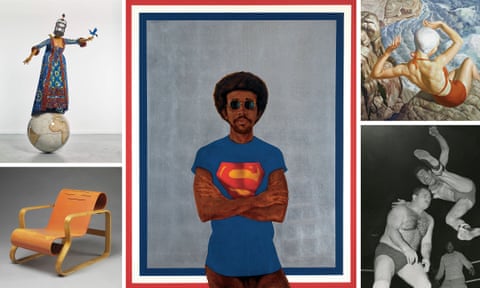Liverpool(e): Mover, Shaker, Architectural Risk-Taker
“Liverpoole is one of the wonders of Britain,” wrote Daniel Defoe in 1715. “What it may grow to in time I know not.” He might be relieved not to have lived to see some of the city’s more dubious town planning decisions, but this proud port has a history of dreaming big and bold – sometimes too bold to be realised. Launching the region’s new architecture centre, RIBA North, this exhibition shines a fascinating spotlight on the history of Liverpool’s unbuilt grand plans, from rival designs for the two cathedrals to the drunken cultural cloud of the Fourth Grace by Will Alsop, planned for the very site where the RIBA’s gallery now stands.
Until 9 September, RIBA North, Liverpool.
Ed van der Elsken: Camera In Love
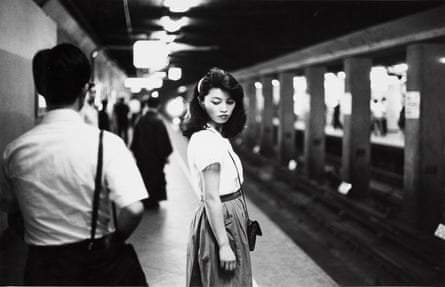
Ed van der Elsken’s shot street scenes, sensuous nudes, jazz musicians, outsiders and bohemian figures like Vali Myers, his most legendary subject and the pivotal character in his pioneering semi-fictional photobook, Love on the Left Bank. Van der Elsken was a pivotal figure in post-war European photography and this exhilarating exhibition brings together photographs, films and photobooks, ranging from his native Netherlands to India.
Until 24 September, Jeu de Paume, Paris
Assemble: How we build
Featuring swagged curtains of silvery Tyvek and candy-coloured cement tiles that look good enough to eat, the first retrospective of young Turner prize-winning architecture collective Assemble takes the form of full-scale recreations of some of their major projects to date, revealing their hands-on working methods in vivid detail. The young group say their projects are prototypes for testing different ways that societies can build together, and if this exhibition doesn’t make you want to go out and get your hands dirty then nothing will.
Until 11 September, Austrian Architecture Museum, Vienna
Enlightened Princesses
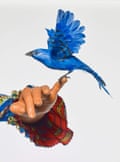
Yinka Shonibare has created a sculpture that pastiches the 18th-century Enlightenment for this exhibition centred on Caroline of Ansbach, Augusta of Saxe-Gotha and Charlotte of Mecklenburg-Strelitz – three German princesses who married into Britain’s Hanoverian dynasty and brought European ideas with them. This is an ambitious survey of the Enlightenment, co-curated with the superb Yale Center for British Art and featuring works by Gainsborough, Zoffany, Stubbs and other greats.
22 June-12 November, Kensington Palace, London.
Gregory Crewdson: Cathedral of the Pines
Filling the Photographers’ Gallery with his quietly disturbing scenes of small-town America, photographer Gregory Crewdson’s series Cathedral of the Pines is, the artist says, his most personal work to date. Shot and staged with a cast of locals, friends and family, Crewdson uses the environs and interiors of an out-of-the-way Massachusetts town, its river and woods as the setting for his scenes from rural life – photography as untold short stories, movies in the making.
23 June-8 October, The Photographers’ Gallery, London.
Portraying a Nation: Germany 1919–1933
This double exhibition of Otto Dix: The Evil Eye (travelling from Düsseldorf), and the large collection of August Sander’s photographs in Anthony D’Offay’s Artist’s Rooms donation, is a portrait of a troubled country. Many of Dix’s searing, often sarcastic paintings, watercolours and etchings, are based on his experiences in the first world war, and Sander’s portraits present typical German “types”, with more than 140 images of farmers, artists, musicians, workers and Nazi officers. Hair-raising.
23 June-15 October, Tate Liverpool.
Aleksandra Mir: Space Tapestry

Mir consummates her passion for space – previously exhibited in such works as her 1999 video First Woman on the Moon – with a wall hanging so huge it has to be shown in two galleries in different cities. Working with a group of young collaborators, she tells the story of our fascination with the cosmos, taking inspiration from the Bayeux tapestry, in which one of the earliest astronomical images, showing Halley’s Comet, appears. She urges us to go where no woman has gone before.
From 23 June, Tate Liverpool and Modern Art Oxford.
Wyndham Lewis: Life, Art, War
Anyone who thinks modernist art is inherently leftwing needs to consider Lewis. This brilliant painter and provocateur was radical in art and life – but like the Italian futurists, was attracted to far-right politics. For all that, he is one of Britain’s most interesting early 20th-century artists and this exhibition shows us the first world war through the eyes of a self-proclaimed vorticist delighted by energy and fragmentation. A blast from the modern past.
23 June-1 January, Imperial War Museum North, Manchester.
Serpentine pavilion by Francis Kéré
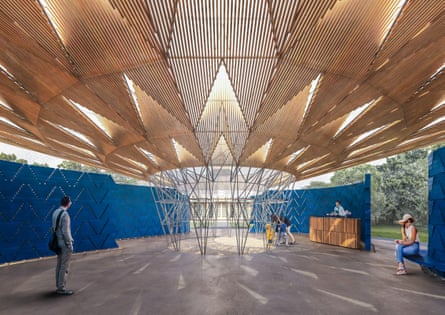
Landing in Kensington Gardens like a rustic flying saucer, this year’s Serpentine pavilion promises to bring a colourful dose of Burkina Faso village life to leafy west London. Designed by Francis Kéré, the first African architect to win the commission, the big disc of spindly wooden slats will hover over a gathering space enclosed by curving blue walls, built of staggered wooden blocks in a textile-like pattern in reference to the festive costumes of his native village.
23 June-8 October, Serpentine Gallery, London.
Dreamers Awake
Bringing together women surrealist painters from the 1930s and women under the influence of surrealism today, Dreamers Awake gets down and dirty with the mystical and the erotic, the spectre of identity and sexual politics. From Leonora Carrington to Sarah Lucas, Claude Cahun to Rosemarie Trockel, Carol Rama to Tracey Emin, this exhibition of more than 50 women artists might be too much of a run-through, leaving you wanting more depth, more of the unconscious. The surreal is always with us.
28 June-17 September, White Cube Bermondsey, London.
Gábor Arion Kudász: Memorabilia
When the Hungarian artist Emese Kudász died, her son Gábor catalogued and photographed her estate, revealing aspects of her art and life that would otherwise have remained hidden. An intriguing exploration of the ways in which photography can be used to archive the contents of a single life – while potentially distorting the creative trajectory of that life by posing a retrospective order on it.
29 June-19 August, Belfast Exposed.
Peter Watkins: The Unforgetting
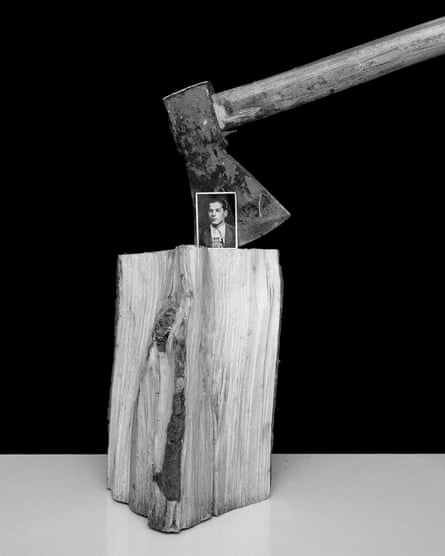
Curated by the Tim Clark, editor of 1000 Words magazine, The Unforgetting centres on the death of Watkins’ mother, who walked into the North Sea in February 1993, when he was nine. The exhibition features images – her ghostly baptism dress, rolls of Super 8 film, and such artefacts as her unopened rucksack, which she left behind on the beach. A deftly negotiated exploration of absence.
29 June-31 July, Webber Gallery, London.
True Faith
For many the darkness of Joy Division trumps the overenunciated synthpop of New Order, but their influence persists, not least in the visual arts. This show brings together such unlikely fans as Mark Leckey, Julian Schnabel, Liam Gillick, Jeremy Deller, Jonathan Demme, Kathryn Bigelow and Robert Longo. No one can beat Peter Saville’s album covers. Will love tear them apart? Can’t wait.
30 June-3 September, Manchester Art Gallery.
Baltic artists’ award
Artists choose artists for the inaugural, innovative Baltic artists’ award. Mexican sculptor Jose Dávila, US artist Eric N Mack, Chinese film-maker Shen Xin and Toni Schmale, a maker of machine-like objects from Hamburg, each receive a 13-week exhibition, £25,000 apiece to create new work and a £5,000 artist fee. Selected by Monica Bonvicini, Mike Nelson, Pedro Cabrita Reis and Lorna Simpson. A unique award, a tantalising roster of artists and selectors, something fresh and new.
30 June-1 October, Baltic, Gateshead.
Student architecture shows
There’s nothing to make you feel lazy like visiting the end of year exhibitions of the country’s architecture schools, where countless man-hours of drawing and model-making, through sleepless nights of blood, sweat and tears, are on display in sprawling shows that fizz with creativity. Be provoked by speculative futures by the Royal College of Art’s students, who are taking over a former fire engine garage in Lambeth, be dazzled by the Bartlett’s sci-fi robotics, and contemplate new models of housing at the Cass.
Jun/July, various venues around the UK
Howard Hodgkin: Painting India
India was a deep inspiration for the great colourist who died this year. Howard Hodgkin collected Indian art and visited the country every year from 1964. India’s landscapes inspired some of his last paintings. The influence goes to the heart of how he painted: one of his greatest works, Leaf can be seen as a Mughal miniature. Greens and reds, a sensational vibrancy of light, shake your heart in Hodgkin’s painted memories of one of his favourite places.
1 July-8 October, Hepworth Wakefield.
True to Life: British Realist Painters of the 1920s and 1930s

Meredith Frampton’s art is so real it is utterly surreal. In society portraits that delighted the wealthy in Britain between the wars, Frampton paints porcelain skin and frozen, glassy faces with meticulous precision. His paintings are brittle, dreamlike images of people too hard-edged to love. This exhibition claims that Frampton and other British realists of the time, such as Laura Knight and James Cowie, deserve a fresh look.
1 July-29 October, Scottish National Gallery of Modern Art, Edinburgh.
Daniel Richter: Lonely Old Slogans
Lurid and abrasive, abstracted and filled with human action, the paroxysms of German painter Daniel Richter often reminds me of a hybrid between James Ensor and Peter Doig, psychedelic graffiti and gonzo figuration. Richter thinks of his art as history painting, filled with weird couplings, crowds of characters, unfathomable, offbeat narratives and violence on the street. As if we don’t already have enough of this sort of thing in Britain today.
2 July-17 September, Camden Arts Centre, London.
Les Rencontres d’Arles photo festival

The world’s biggest photography festival gets under way in Arles with an opening week of talks, projections in the Roman amphitheatre, events, book signings and exhibitions. Highlights include early work by Joel Meyerowitz, a Masahisa Fukase retrospective, and four exhibitions devoted to South American photography.
3 July-24 September, various venues, Arles, France
Joseph Beuys
The greatest European artist of the late 20th century was a titan whose genius becomes ever more apparent. Joseph Beuys gave Germany its imagination back and proved that romanticism and expressionism still had something to say. He also proved that art and life are one, as the sculpture at the centre of this show, Boxing Match for Direct Democracy (1972), illustrates. In the archive images of the original performance it looks as if Nosferatu has put on the gloves.
7 July-11 August, Waddington Custot, London.
Soul of a Nation
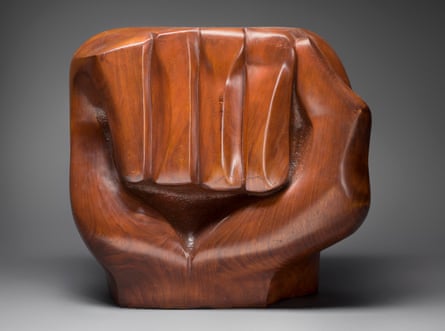
Taking us from 1963 to 1983, from the Civil Rights Movement to Black Power militancy and calls for revolution, Soul of a Nation is a landmark show. The Black Panther party’s culture minister Emory Douglas declared: “The ghetto itself is the gallery.” This wide-ranging, belated exhibition brings with it recognition of many of the artists, black and white, whose contribution to American art has so often been overshadowed, sidelined and ignored.
12 July-22 October, Tate Modern, London.
Roy DeCarava
As part of Soul of a Nation: Art in the Age of Black Power, an extensive overview of black radical art from the 1960s to the 1980s, Tate Modern will be exhibiting the atmospheric street photographs and portraits of Roy DeCarava, who chronicled the everyday lives of African Americans in Harlem. DeCarava always rejected the description “documentary photographer”, emphasising instead the creative expressiveness of his images. The show will explore the notion of a black aesthetic in photography.
12 July-22 October, Tate Modern, London.
Plywood: Material of the Modern World, and V&A Exhibition Road courtyard

From one of the fastest aeroplanes of the second world war to downloadable self-assembly housing, the versatility of humble plywood will be put on show in an eye-opening exhibition that traces the history of this innovative material from the 1850s to the present day. Alongside the moulded furniture, surfboards and racing cars, this summer also sees the V&A celebrate the opening of its long-awaited Exhibition Road Quarter by Amanda Levete Architects, featuring a porcelain tiled courtyard and vast underground gallery, launched with a week-long festival of performances and family fun.
15 July-12 November, Porter Gallery, Victoria & Albert Museum, London
The Dragon of Profit and Private Ownership
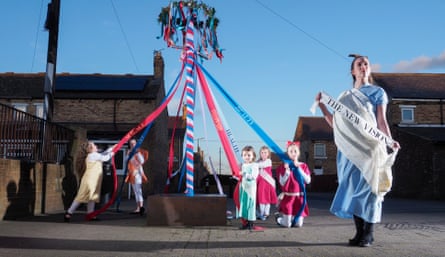
In Alasdair Gray’s great Scottish novel Lanark, the selfishness and isolation of modern life in a capitalist society turns people into dragons with hard scaly skins. Here, as if blazing from Gray’s pages, a dragon personifying the evils of our time takes shape inside the appropriately gothic Trinity Apse as part of the Edinburgh art festival. This participatory artwork by Zoe Walker and Neil Bromwich invites people to try to slay the dragon and bring about a better world.
27 July-27 August, Trinity Apse, Edinburgh. As part of Edinburgh Art festival.
Pablo Bronstein: The Rose Walk
Jupiter Artland, with its woods full of artistic surprises, is Britain’s best sculpture park, and Pablo Bronstein, with his passion for 18th-century architecture and manners, is a perfect artist to add to its subversions. The artist, acclaimed for a recent living sculpture at Tate Britain, is creating a permanent work in which a rose garden creates a formal walkway between two follies, one pseudo-Chinese and one Gothic in style.
From 27 July, Jupiter Artland, near Edinburgh.
Douglas Gordon
Scotland’s most imaginative modern artist is also the most aware of its brilliant literary heritage. Douglas Gordon won the Turner prize in 1996 for Confessions of a Justified Sinner, a video whose dark images of split identity merge the gothic fictions of James Hogg and Robert Louis Stevenson. Here he takes on the nation’s favourite writer (well, before Irvine Welsh), poet Robert Burns. Gordon is guaranteed to reveal a sinister side of this hero.
29 July-29 October, Scottish National Portrait Gallery, Edinburgh.
Shadows of War: Roger Fenton’s Photographs of the Crimea, 1855

The first war photographer was a Victorian gentleman who took his camera to the Crimea to document a wretched power struggle in which soldiers were freely sacrificed. Roger Fenton’s photographs have a stillness that records the relics of death. In Valley of the Shadow of Death he conveys the horror of war through a wasteland littered with cannon balls. Do his restrained photographs actually say more than today’s bombardment of media images from conflict zones?
4 August-26 November, Queen’s Gallery, Holyroodhouse, Edinburgh.
Matisse in the Studio
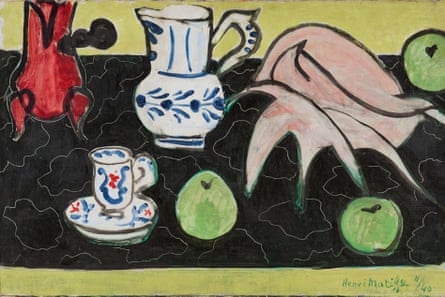
How many people could fit in Matisse’s studio, never mind the RA’s Sackler Galleries, where the crowds will be joined by 65 of Matisse’s paintings, sculptures, drawings, prints and cutouts, as well as 35 objects – African masks, a Roman torso, Chinese porcelains and North African textiles, many of which appeared in the artist’s paintings. The difficulty will be seeing it all, and slowing down to take it all in. Matisse saw the objects he collected as actors, taking on different roles in his art. Will there be room for us too?
5 August–12 November, Royal Academy, London.
